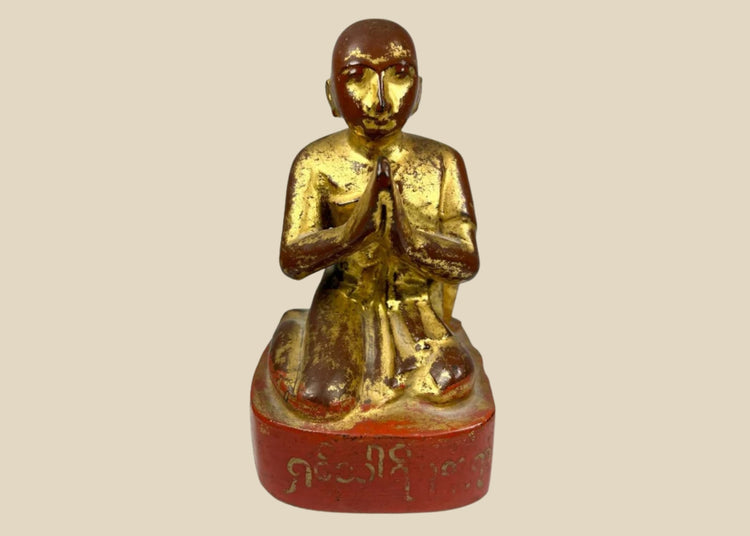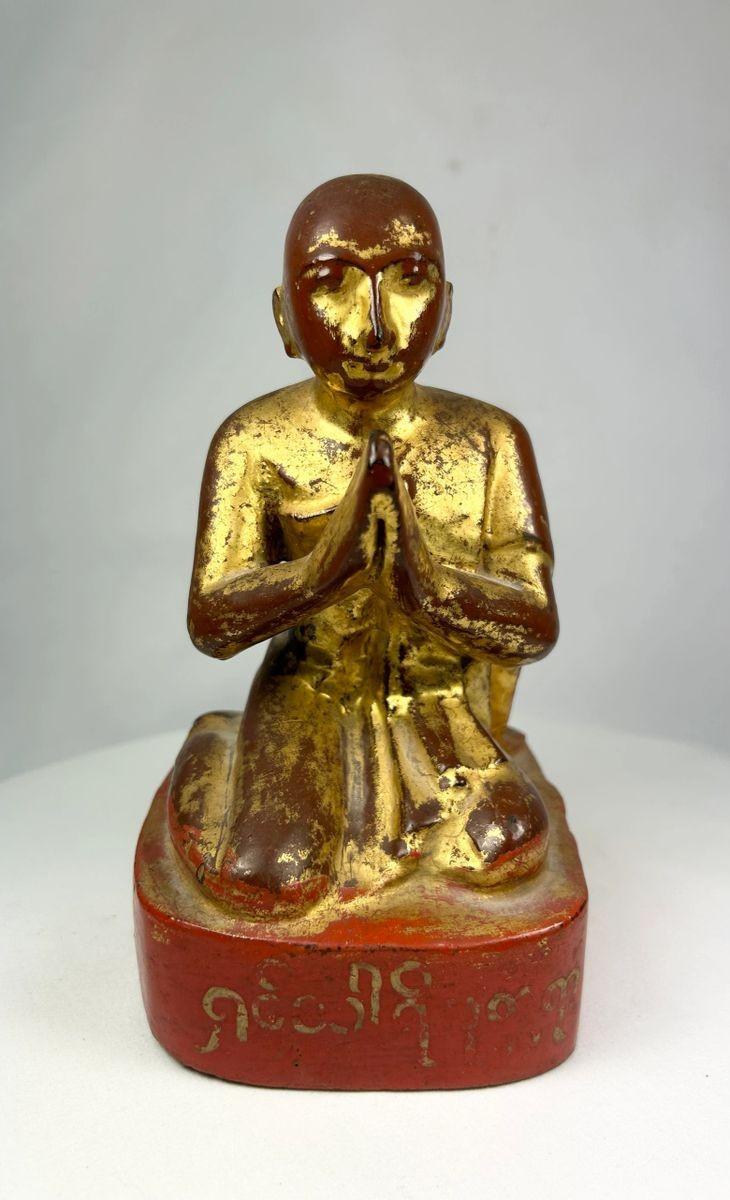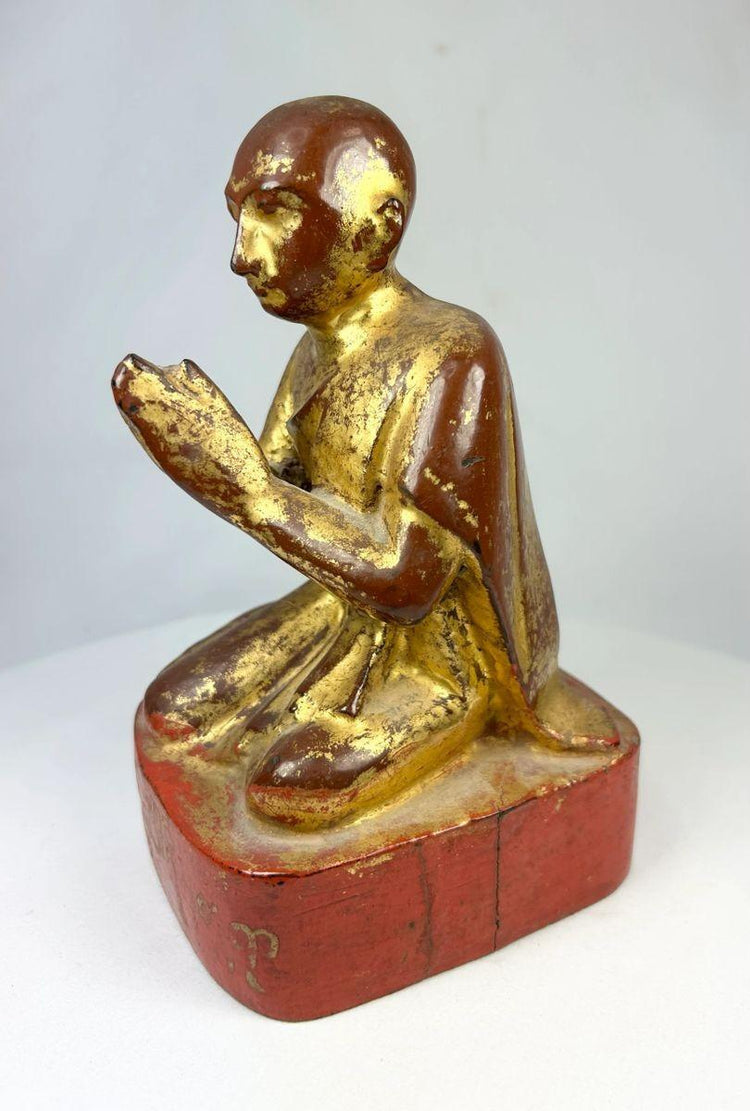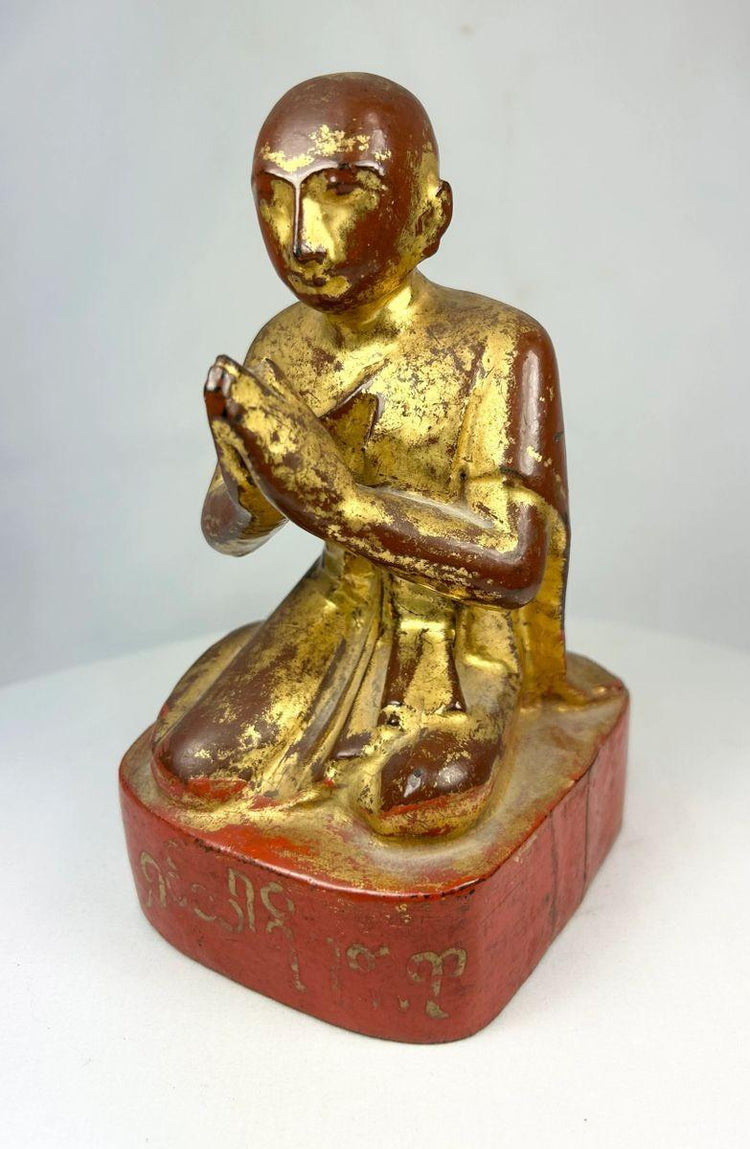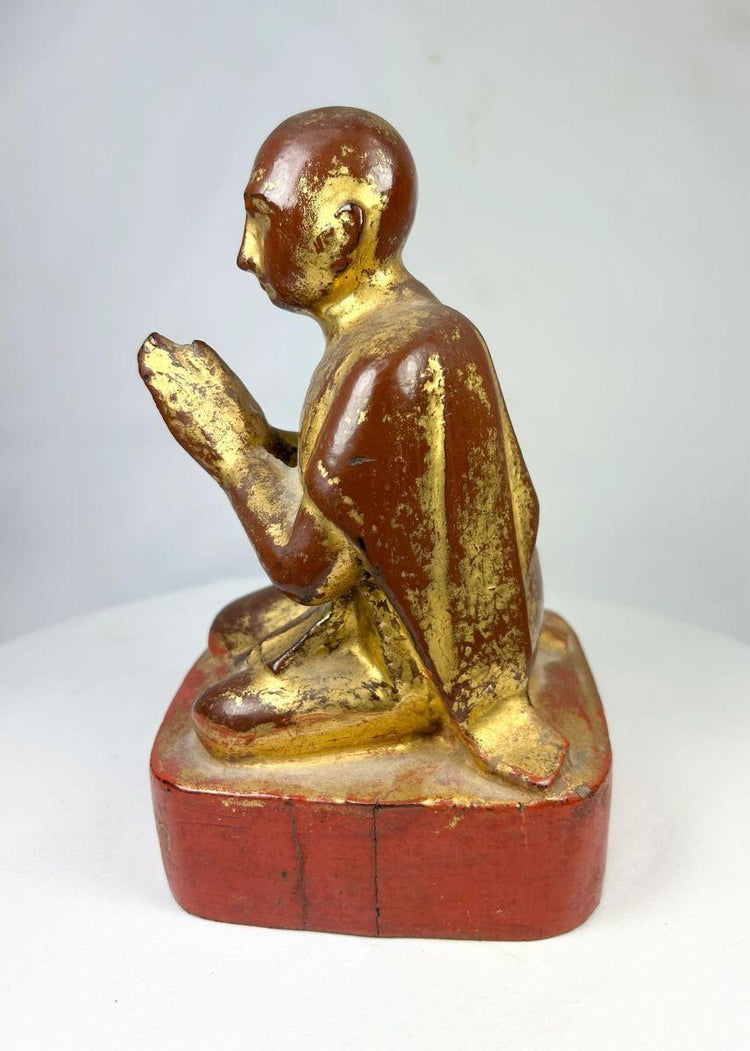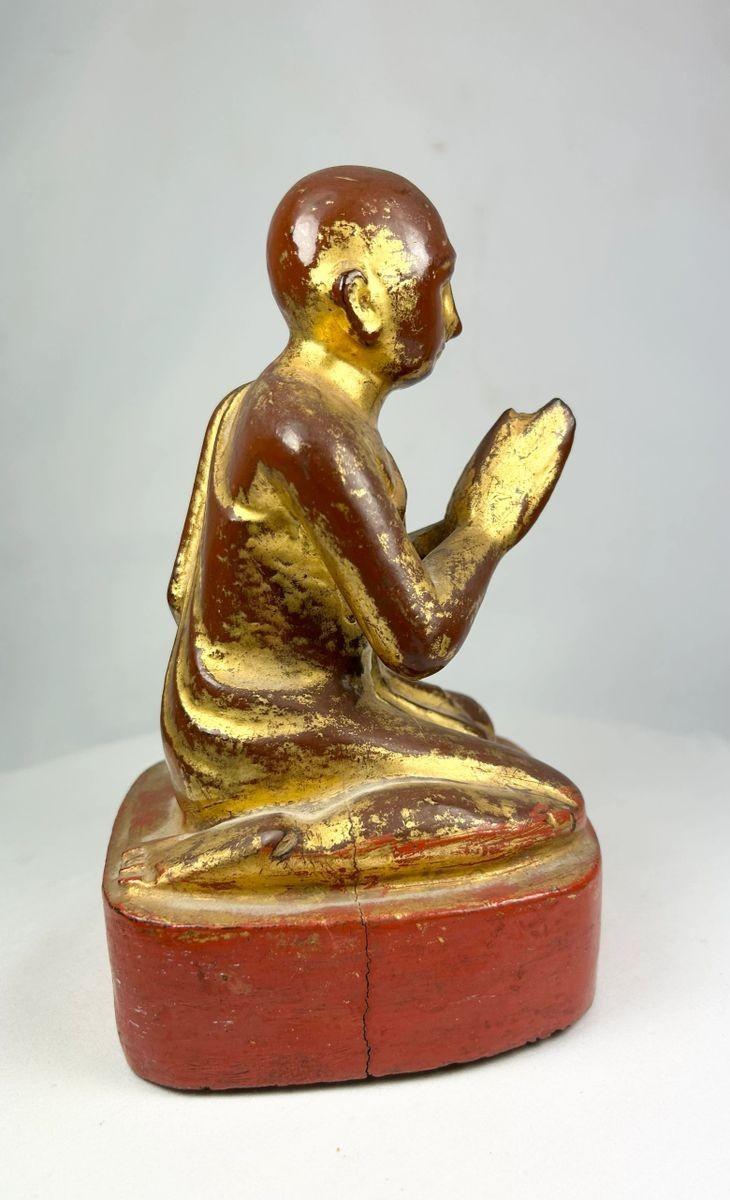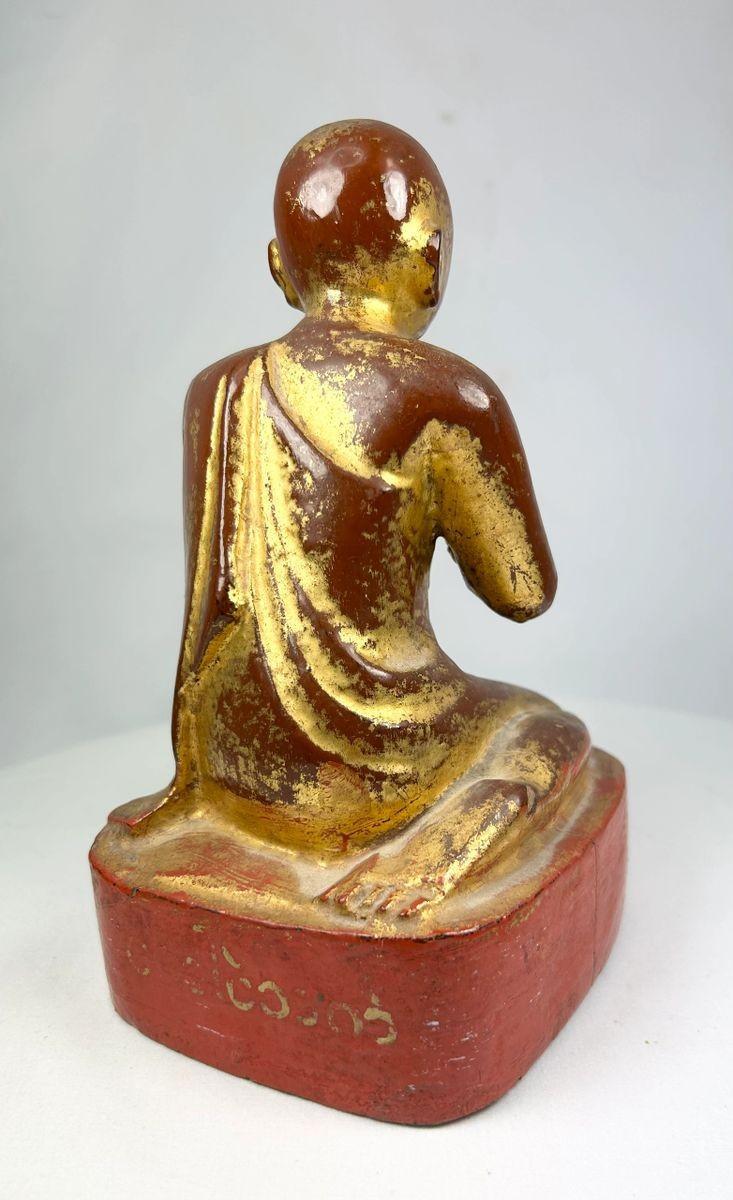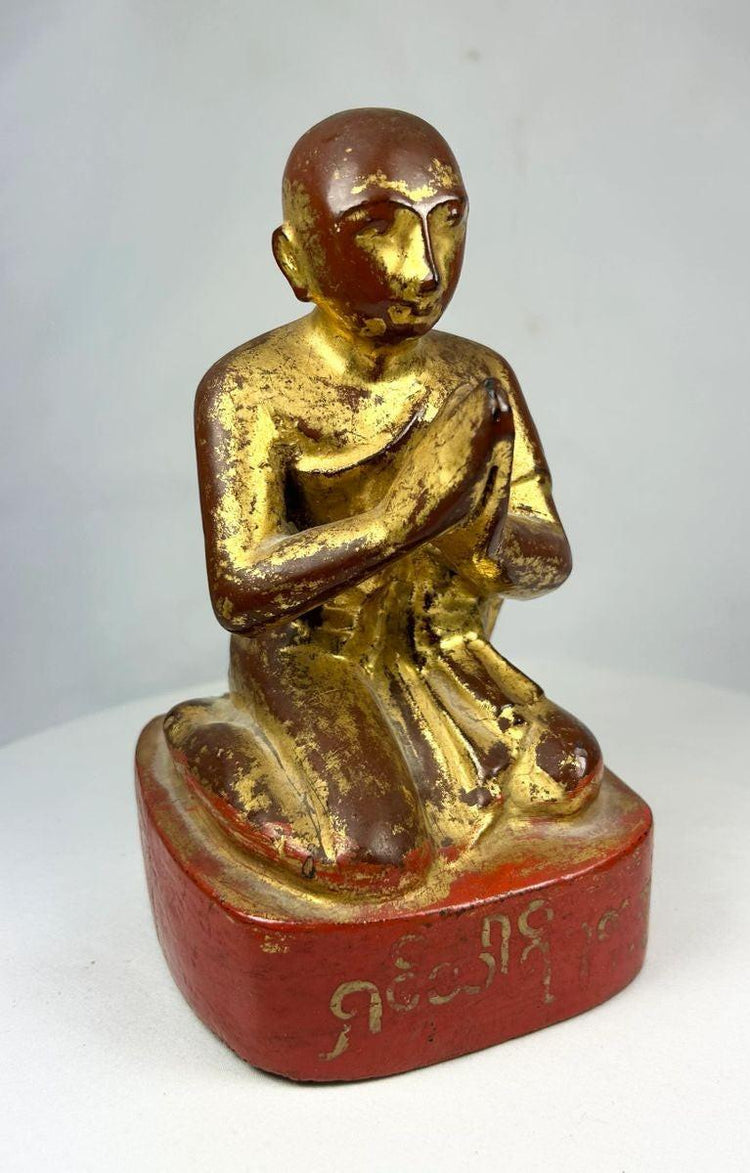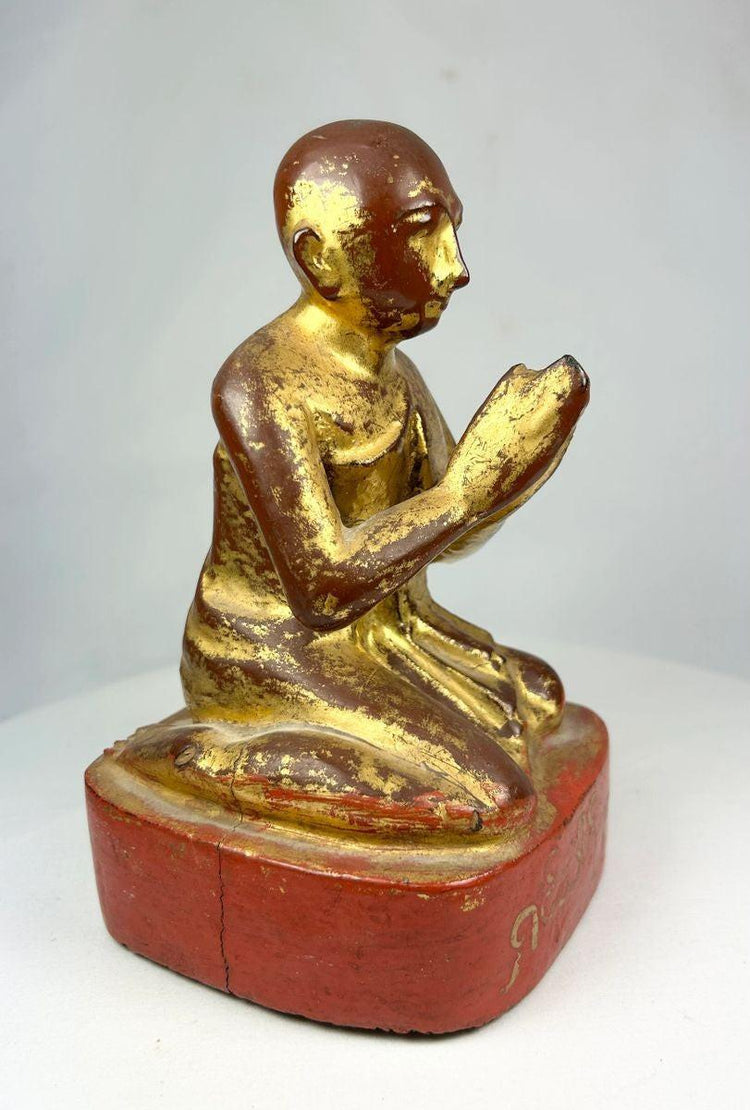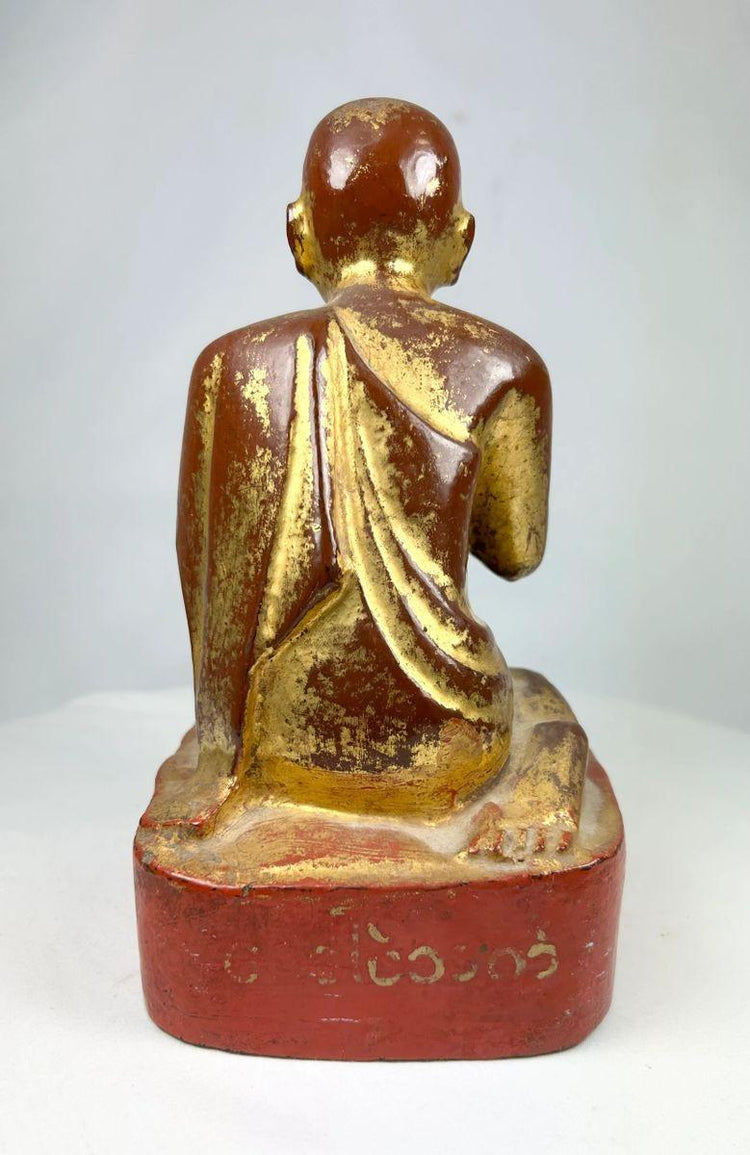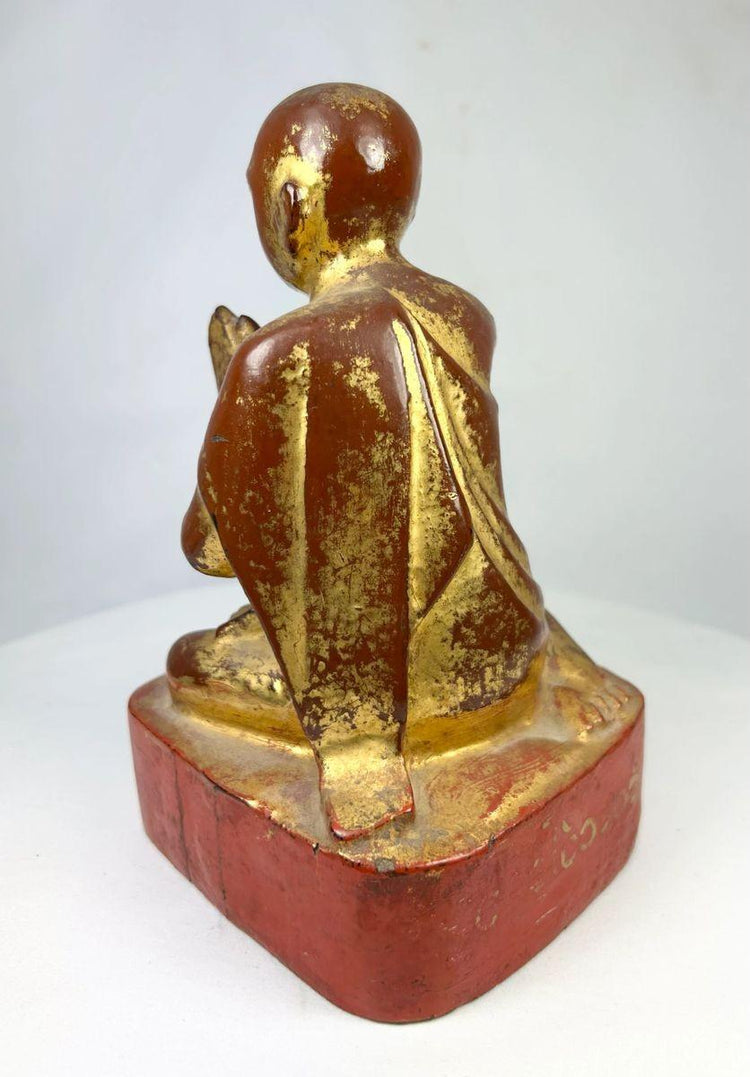Antique Burmese Gilded Monk Statue | Southeast Asian Buddhist Art | Circa 19th Century
Description
More
Less
Historical Context & Origin
Region: Burma (Myanmar)
Material: Hand-carved wood with gold leaf and lacquer
Period: 19th Century
Description
This finely crafted Burmese wooden statue depicts a Buddhist monk seated in a kneeling meditative posture with hands pressed together in Anjali Mudra, the traditional gesture of reverence. Adorned with remnants of its original gilding and lacquer, the figure embodies the serene devotion and spiritual humility central to Buddhist practice. The robe, delicately carved and detailed, enhances the tranquil expression, while the base bears Burmese script inscriptions that may reference blessings or dedications. Such statues were often placed in temples or household shrines as objects of worship and merit-making, symbolizing devotion and spiritual guidance.
Features
- Traditional kneeling monk figure with hands in Anjali Mudra
- Original traces of gold leaf and lacquer applied as devotional offerings
- Burmese script inscriptions on the base, likely connected to blessings or dedications
- Hand-carved detailing in robe folds and serene facial expression
- Compact size ideal for both personal shrines and collection display
Cultural Significance
Monk statues such as this represent not only reverence for the Buddhist monastic community but also the broader values of humility, compassion, and spiritual discipline. In Burmese culture, gilding and lacquering devotional figures was an act of merit-making, intended to accrue spiritual blessings for the donor. This piece thus embodies both artistic craftsmanship and the deeply rooted Buddhist tradition of honoring the sangha (monastic order).
Condition
The statue retains much of its original gilding and lacquer, now aged to a warm and authentic patina. Natural wear, minor surface cracking, and areas of lacquer loss are consistent with its 19th-century origin and devotional use, adding to its historical character. Structurally, it remains solid and well-preserved, making it a highly collectible artifact of Southeast Asian religious art.
Dimensions (approximate)
Height: 7.5 in (19 cm)
Width: 4.25 in (11 cm)
Age
Over 120 years old
Learn More
Explore the Symbolism and Significance of Buddha Statues Throughout History
Discover Our Curated Selection of Buddha Statues, Relics, and Spiritual Treasures
Description
Historical Context & Origin
Region: Burma (Myanmar)
Material: Hand-carved wood with gold leaf and lacquer
Period: 19th Century
Description
This finely crafted Burmese wooden statue depicts a Buddhist monk seated in a kneeling meditative posture with hands pressed together in Anjali Mudra, the traditional gesture of reverence. Adorned with remnants of its original gilding and lacquer, the figure embodies the serene devotion and spiritual humility central to Buddhist practice. The robe, delicately carved and detailed, enhances the tranquil expression, while the base bears Burmese script inscriptions that may reference blessings or dedications. Such statues were often placed in temples or household shrines as objects of worship and merit-making, symbolizing devotion and spiritual guidance.
Features
- Traditional kneeling monk figure with hands in Anjali Mudra
- Original traces of gold leaf and lacquer applied as devotional offerings
- Burmese script inscriptions on the base, likely connected to blessings or dedications
- Hand-carved detailing in robe folds and serene facial expression
- Compact size ideal for both personal shrines and collection display
Cultural Significance
Monk statues such as this represent not only reverence for the Buddhist monastic community but also the broader values of humility, compassion, and spiritual discipline. In Burmese culture, gilding and lacquering devotional figures was an act of merit-making, intended to accrue spiritual blessings for the donor. This piece thus embodies both artistic craftsmanship and the deeply rooted Buddhist tradition of honoring the sangha (monastic order).
Condition
The statue retains much of its original gilding and lacquer, now aged to a warm and authentic patina. Natural wear, minor surface cracking, and areas of lacquer loss are consistent with its 19th-century origin and devotional use, adding to its historical character. Structurally, it remains solid and well-preserved, making it a highly collectible artifact of Southeast Asian religious art.
Dimensions (approximate)
Height: 7.5 in (19 cm)
Width: 4.25 in (11 cm)
Age
Over 120 years old
Learn More
Explore the Symbolism and Significance of Buddha Statues Throughout History
Discover Our Curated Selection of Buddha Statues, Relics, and Spiritual Treasures
You May Also Like




























